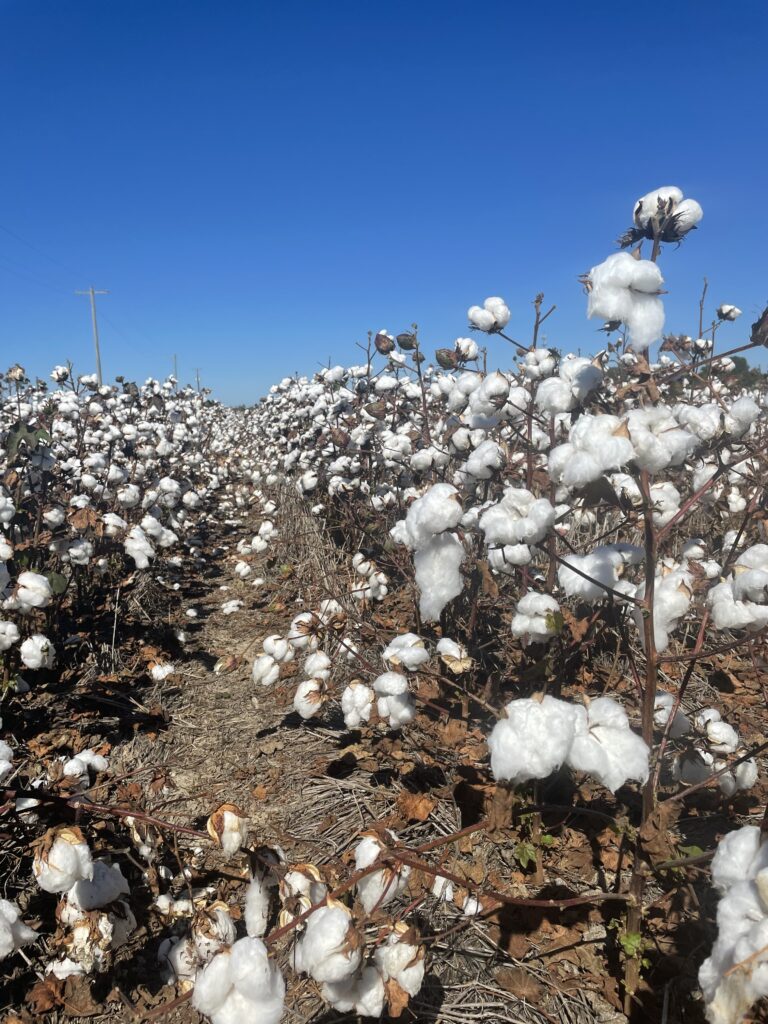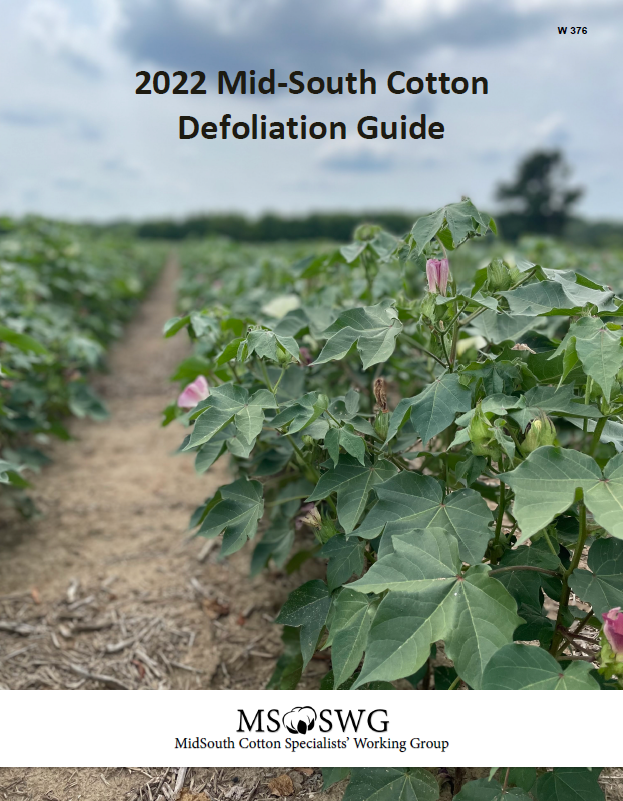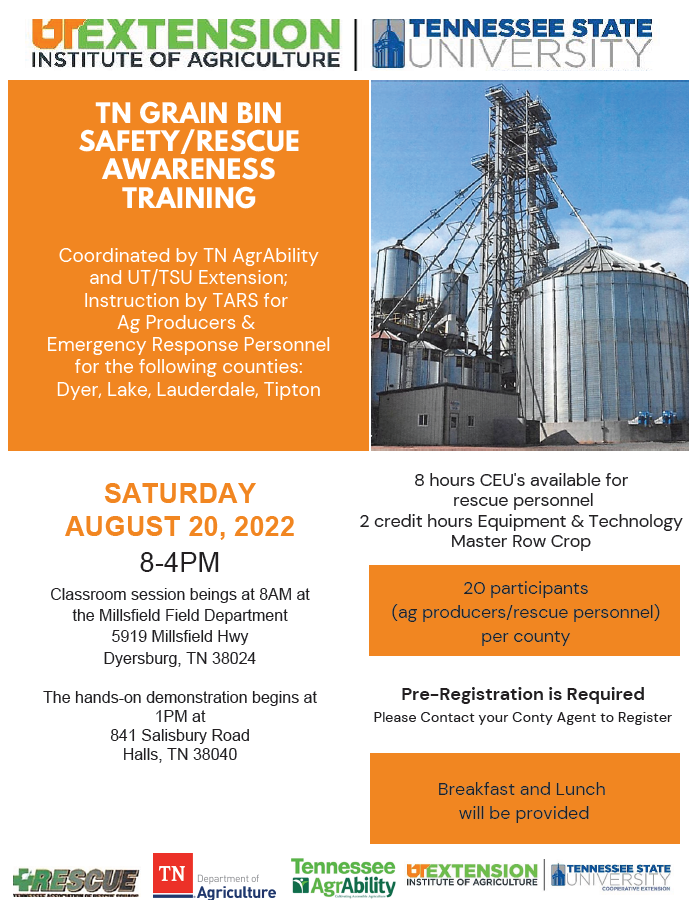 This has been a big week for defoliation. Most of the calls have consisted of one or two questions. First, how long should I wait on acres that are nowhere near ready and second, what is the concoction when the weather is this cool? In this blog, I share a few thoughts on timing and some results from a strip trial we completed in cool conditions during 2020.
This has been a big week for defoliation. Most of the calls have consisted of one or two questions. First, how long should I wait on acres that are nowhere near ready and second, what is the concoction when the weather is this cool? In this blog, I share a few thoughts on timing and some results from a strip trial we completed in cool conditions during 2020.
All posts by Tyson Raper, Cotton & Small Grains Specialist
Pond Aeration Field Day in Covington Oct 18th
 On October 18th at 10:00 am there will be a pond meeting on aeration. Fisheries Biologist Bob Robinson from Kasco aerators will be discussing everything about aerators. He will even have a couple of types there to see. The meeting will be at:
On October 18th at 10:00 am there will be a pond meeting on aeration. Fisheries Biologist Bob Robinson from Kasco aerators will be discussing everything about aerators. He will even have a couple of types there to see. The meeting will be at:
468 Charlie Owen Rd in Covington TN.
There is a covered pavilion with picnic tables and chairs as well as a restroom. Memphis Net and Twine and Kasco are sponsoring our lunch so I will need a head count. Please call the office at 901-476-0231 or email me at beckymuller@utk.edu or Jeff Via at 901-476-0231 or jvia@utk.edu if you plan to attend.
REMINDER: Cotton Tour this WEDNESDAY, 9/21 @ 8AM
 The West Tennessee Research and Education Center (WTREC) would like to cordially invite you to the 2022 University of Tennessee Cotton Tour. This event is scheduled for Wednesday, Sept. 21st at WTREC (605 Airways Blvd., Jackson, TN 38301). Registration will begin at 8:00 a.m. with the tour departing at 8:15. The tour will end at noon with lunch. University of Tennessee Extension and Research personnel from across the state will be presenting on a wide range of pertinent topics. Pesticide Re-certification and CCA points will be available. The agenda can be found by clicking here. Looking forward to seeing you there!
The West Tennessee Research and Education Center (WTREC) would like to cordially invite you to the 2022 University of Tennessee Cotton Tour. This event is scheduled for Wednesday, Sept. 21st at WTREC (605 Airways Blvd., Jackson, TN 38301). Registration will begin at 8:00 a.m. with the tour departing at 8:15. The tour will end at noon with lunch. University of Tennessee Extension and Research personnel from across the state will be presenting on a wide range of pertinent topics. Pesticide Re-certification and CCA points will be available. The agenda can be found by clicking here. Looking forward to seeing you there!
Impact of Drought on Residual Soil Nitrate
Abnormally dry soil conditions as a result of rainfall amounts far below average during this corn growing season present unique nutrient management decisions after harvest, particularly for growers considering wheat crop this fall. This article will address two key questions that may come handy in making management decisions: Is there be considerable amounts of residual soil N left after the 2022 corn crop? and if the residual soil nitrate is sufficient to meet N demand of the wheat crop in the fall? Continue reading
2022 Cotton Tour scheduled for Sept 21st @ 8AM

The West Tennessee Research and Education Center (WTREC) would like to cordially invite you to the 2022 University of Tennessee Cotton Tour. This event is scheduled for Wednesday, Sept. 21st at WTREC (605 Airways Blvd., Jackson, TN 38301). Registration will begin at 8:00 a.m. with the tour departing at 8:30. The tour will end at noon with lunch. University of Tennessee Extension and Research personnel from across the state will be presenting on a wide range of pertinent topics. Pesticide Re-certification and CCA points will be available. Check back on the blog for an agenda in the coming weeks.
2022 Mid-South Defoliation Guide now available
 The 2022 Mid-South Defoliation Guide is now available online. You can access the guide by clicking the above image or any of the embedded links within this post. This guide was compiled and is updated yearly by Extension Cotton and Weed Science Specialists from throughout the Mid-South.
The 2022 Mid-South Defoliation Guide is now available online. You can access the guide by clicking the above image or any of the embedded links within this post. This guide was compiled and is updated yearly by Extension Cotton and Weed Science Specialists from throughout the Mid-South.
Physiological vs seasonal cutout: Estimating the last effective bloom
It is hard to believe how different this crop looks now compared to the end of July. Although our earliest planted acres and acres planted on ‘thin’ ground have mostly bloomed out of the top, many of our later planted acres and acres on moderate to strong ground have just passed peak bloom. In 2022, the last effective bloom on many of our earliest planted, cutout acres flowered weeks ago. In contrast, the last effective bloom of our later planted acres will likely be determined by the number of heat units remaining in the season. You can easily see these two contrasting scenarios in the above video; the later planted cotton has blooms throughout the canopy and is riding 4-6 NAWF while the earlier planted cotton cutout weeks ago. In this blog, I tackle the concept of last effective bloom, our predicted last effective bloom date and how we must use these concepts in 2022 to maximize our return on investment. Continue reading
Grain Bin Safety Awareness/Rescue Training Aug 20, 2022 in Dyersburg
 More and more farmers are looking to use on-farm grain storage to have the ability to produce more corn and take advantage of grain market price variations. While on-farm storage offers the farmer flexibility in the harvest process, there is a need for grain bin safety training to help farmers and rescue squad members learn how they can knowledgeably respond to a potential accident.
More and more farmers are looking to use on-farm grain storage to have the ability to produce more corn and take advantage of grain market price variations. While on-farm storage offers the farmer flexibility in the harvest process, there is a need for grain bin safety training to help farmers and rescue squad members learn how they can knowledgeably respond to a potential accident.
The one-day training program is specifically designed for emergency responders who may be called to a person or persons trapped in a grain bin. Upon completion of this course, the responder will possess the specialized knowledge to function as a member of a grain rescue team. Local farmers and extension agents are encouraged to attend to learn how they can assist in the event of a grain bin emergency. Continue reading

